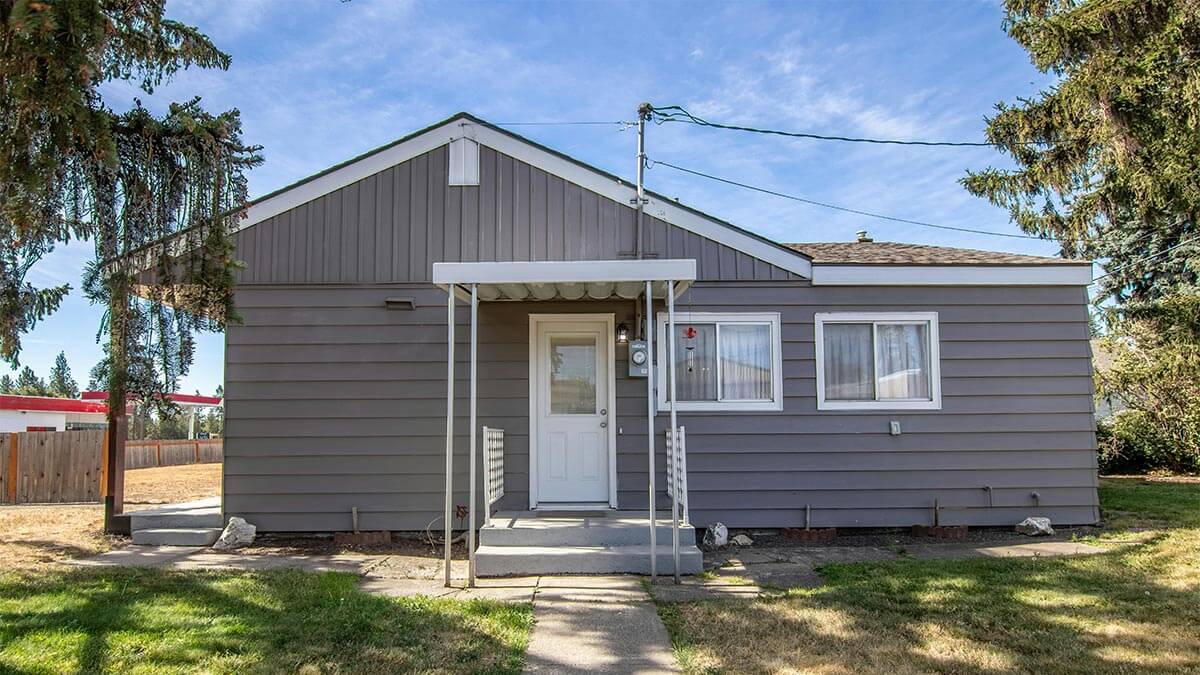Did you know that, according to CNBC, the health-care costs for retirees went up as high as $280,000 in 2018—and it was only expected to become more expensive at $285,000 in 2019? One of the best ways to avoid having to pay so much in the future is to invest in long-term care insurance.
You have to plan for your future so that you live a long, happy life—but how do you know if this is a way to do that? You also might be stressed about the cost of long-term care insurance.
That’s why we’ve put together this article. We’ll provide you with all the information you need to know about long-term care insurance. Once you know what you need to, you can decide if long-term care insurance is right for you.
Compare Cash Offers from Top Home Buyers. Delivered by Your Local iBuyer Certified Specialist.
One Expert, Multiple Offers, No Obligation.
What is long-term care insurance?
Long-term care insurance is a type of coverage that is different from your everyday health insurance. With long-term care insurance, you’re preparing for the day when you might need additional care that is related to your health but that isn’t directly dealing with your health problems.
Basically, long-term care covers different types of care you might need when you’re older.
This might include covering adult or personal care at home, home health care, or nursing-home care. It’s used when you have a disabling or chronic condition that requires you to have supervision.
This might include getting help with getting out of bed in the morning and getting back in bed at night. It also might include dressing, bathing, and other daily activities that can be difficult to do when you’re older and dealing with a health condition that affects your daily life.
These health conditions might include disorders, disabilities, or chronic health conditions. One example of this is Alzheimer’s disease, which affects more than 5 million Americans.
Even though your ordinary medical insurance would cover the medication and treatments you need for this health condition, it wouldn’t cover the care you need to live well. For this reason, it’s smart to think about combining your health insurance you already have with long-term care insurance.
If you have long-term care insurance, you’re likely to get covered by any care you receive at an adult day care center, an assisted living facility, a nursing home, and your own home.
When to get long-term care insurance
For this reason, many people have to think about long-term care insurance before they get older. They’re preparing so that they can have fulfilling lives in the future, without any annoying complications that come with common age-related disorders.
It’s important to think about long-term care costs as spending they’ll have to plan for in the future.
Usually, when people are in their fifties or older, they need to start thinking about how they’re going to save for these potential costs. Those who don’t worry about it now may end up paying far more money later on. In fact, often loved ones are the ones who end up having to pay.
Because it’s not possible to get affordable long-term care insurance with a debilitating condition, it’s necessary to plan ahead and get this insurance sooner rather than later. Most people buy it when they’re in their fifties or sixties.
How does long-term insurance work?
If you’ve decided that long-term insurance is something you’re thinking of buying, then it helps to understand how it works. In this section, we’ll answer the question, “How does long-term insurance work?” To get started, you have to get in touch with the long-term care insurance provider so they can send you an application.
Then, you fill it out, answering health-related questions. The long-term care insurance provider might also interview you or ask for health records. This will help them determine if you’re eligible.
Once the provider has decided that you’re a good candidate for long-term care insurance, you can choose how much coverage you’re planning to get. Usually, there’s a max that can be paid per day by the insurer. There’s also a cap on how much they will cover you throughout your lifetime.
This is how to get long-term care insurance.
After being approved and after you get the policy issued by the insurer, you’ll start paying for the insurance with premiums.
It won’t be until you need the long-term care insurance that it will kick in. Usually, you become eligible for the benefits of the policy once you are no longer able to do two out of a total of six ADLs, or “activities of daily living,” on your own. These ADLs include:
- Getting in and out of your bed
- Getting in and out of a chair
- Any other type of transferring (as described above)
- Eating
- Dressing
- Being able to care for incontinence
- Bathing
If you’ve ever had to care for an older family member, then you are likely familiar with the importance of having a caretaker for any of these activities. In addition to not having two of these ADLs, you will also become eligible for the benefits if you suffer from a cognitive impairment like dementia.
Making the claim
Once you can no longer do two ADLs or suffer from a cognitive impairment, it’s time for you to make your claim. When you do this, the insurance company might send a nurse so that they can do an evaluation on you. They will also take a look at your medical documents that your doctor provides them.
The insurer also has to approve the “plan of care” you’ve selected before they approve your claim.
Usually, you’ll have to pay out of pocket for your care services at the beginning. Then, once your claim has gone through and been approved, the insurer will pay you back for the money you’ve spent.
You’ll usually have to wait between 30 and 90 days, depending on how your insurer processes claims, before they start reimbursing you. This is referred to as the “elimination period.”
As mentioned earlier, there will be a daily limit on how much you can get reimbursed for by the insurance company. Additionally, there will be a cap on how much coverage you can get throughout your lifetime.
Shared care option
Considering that there’s a cap on how much money you can be reimbursed, you might be stressed about what would happen if you reach that limit. This is where the shared care option comes in. This isn’t available with all long-term care insurers, but you should look for one that offers this option if you think your costs may be too high.
A shared care option is where both you and your spouse buy a policy at the same time, after which each other’s limits are combined.
As a result, if you or your spouse need additional care that needs to be covered over the amount of the individual daily or lifetime cap, then the other person’s remaining insurance amount can be used for coverage.
Do I need long-term care insurance?
It is very likely that you need long-term care insurance. Unless you’re very wealthy and can afford to pay for these issues when they come up, you need to prepare for the future. You should do this for yourself, your spouse, and your children.
This might be a stressful thing to plan for, but it’s important to do so.
Something you might not be sure about is when to start paying. This will have an impact on the cost of your premiums. When to start paying depends on a variety of factors, such as your age and your health.
We’ll review all this in the last section of this article, where we cover the costs of long-term care insurance.
What does long-term insurance cover?
As we’ve reviewed, long-term insurance is different from your ordinary health insurance in that it covers the care you need when you’re dealing with a health condition or can no longer perform two out of the six ADLs. What’s important to understand is that long-term insurance covers you no matter where you are.
When you’re covered by long-term insurance, you get coverage not only for nurses who come help you in your home but also for some of the costs of being at a care facility. It will also cover the costs of any changes you need to make to your home, such as repairs.
For example, if you need to install a stairlift, you may be able to have some of the installation and purchase price covered.
As a result, long-term insurance covers care coordination, home modification, in-home care, adult day care services, assisted living facilities, and nursing home care.
Of course, different insurance plans will vary. For this reason, you should think about how you envision your future. Even though it’s not the most pleasant to think about how you won’t be able to perform daily tasks in the future, you have to do it for yourself and for your loved ones.
Once you know what you would want to be covered and where you envision yourself living later in your life, you’ll have a good idea of which type of coverage you want to get.
How much is long-term care insurance?
If you’re asking the question, “How much is long-term care insurance?” we’ll answer that question here. This can vary significantly, depending on your age, your health, and your gender. Additionally, your marital status and coverage amount will make a difference.
If you’re older when you purchase long-term care insurance, you’ll have to pay more.
This is because of the many health complications that come along with getting older. Additionally, there’s more incentive for the insurance company to have you start paying earlier, before your health issues start to impact your ADLs or cognitive function.
Your current health will also have an impact on the cost of your long-term care insurance. If your health is in poor condition, you will have to pay more.
If you have a disease that runs in your family but you don’t have it, it’s best to get insured before it potentially becomes a health problem you have. Additionally, if you have any current health problems, do what you can to deal with them before you apply for long-term care insurance.
Gender will also have an impact on the cost. Because women usually live longer than men, they have to pay more. Marital status has an impact too, as your premiums will be lower if you’re married.
Insurance companies themselves will vary in cost, depending on what it is they offer you. Additionally, the amount of coverage you receive will have an impact on the amount of money you end up paying in premiums.
Instant Valuation, Confidential Deals with a Certified iBuyer.com Specialist.
Sell Smart, Sell Fast, Get Sold. No Obligations.
I am a recent graduate of Florida Institute of Technology, where I obtained an M.S. in Accounting and Financial Forensics (MSAFF), as well as an MBA. During my time at Florida Tech, I was the founder and president of the Internal Audit Student Organization on campus, served as a Student Vice President of Phi Kappa Phi Honor Society, as was chosen as one of the top ten seniors during my final year of undergraduate study. While at iBuyer.com, I have taken on a research role and studied the real estate industry at both micro- and macroeconomic levels.




